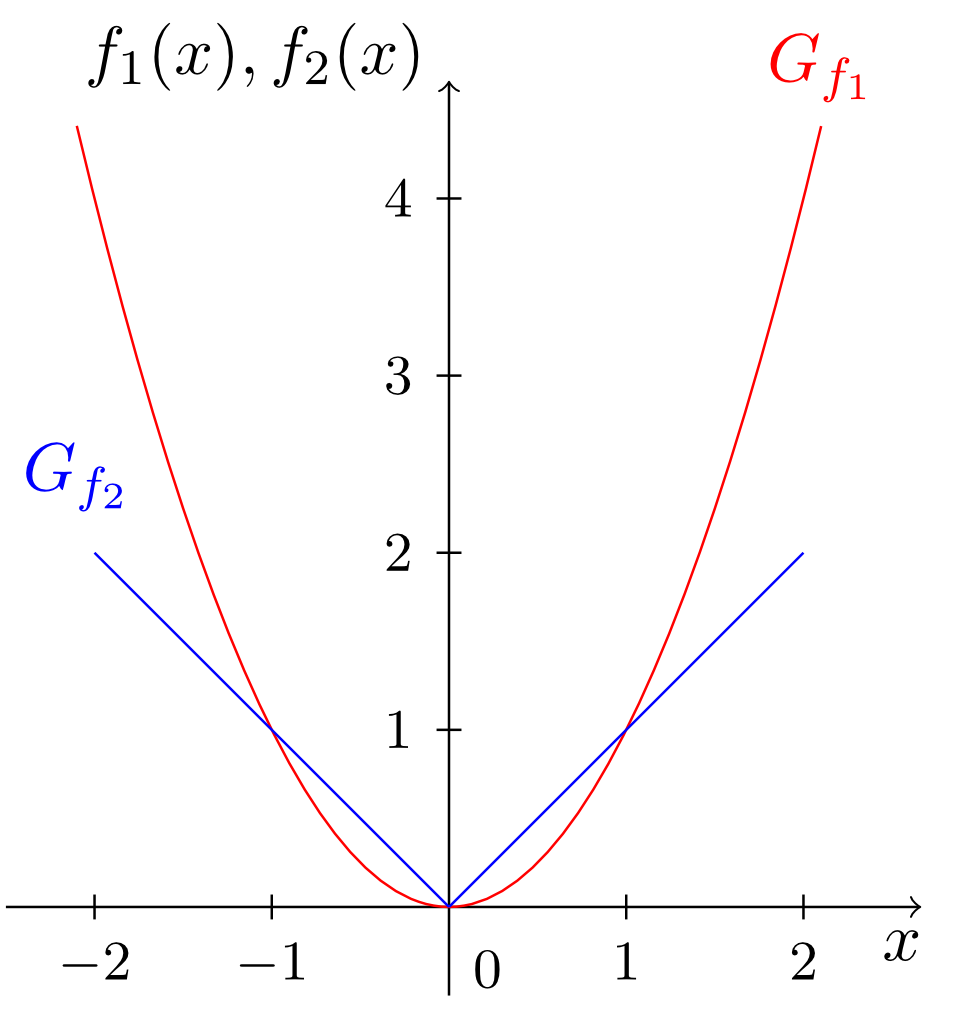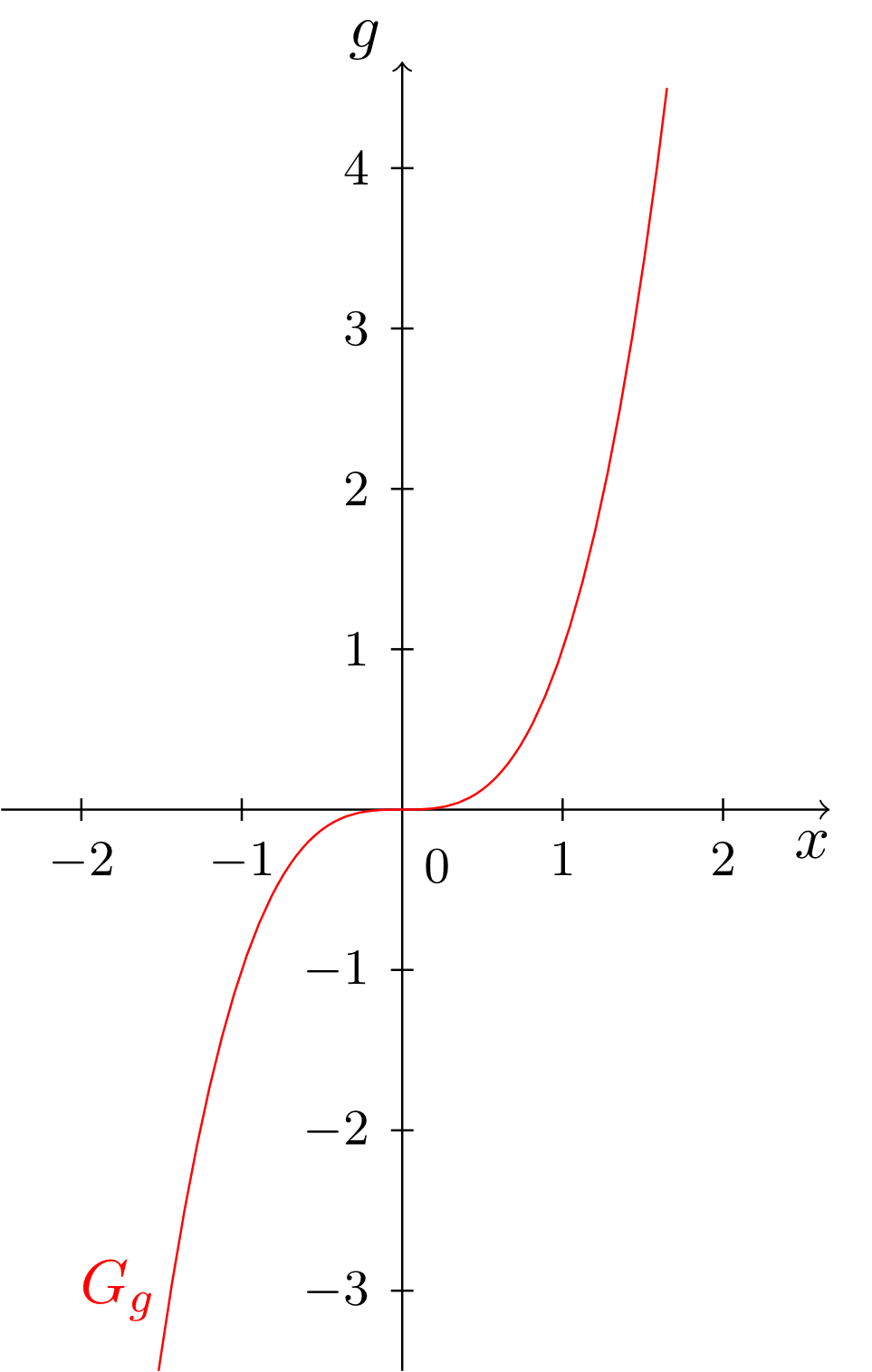Chapter 6 Elementary Functions
Section 6.6 Properties and Construction of Elementary Functions6.6.2 Symmetry
Info 6.6.1
A function is called even or axially symmetric if, for all , we have
Analogously, a function is called odd or centrally symmetric if, for all , we have
These two symmetry conditions for functions allow us to make conclusions about the behaviour of the graphs. For even functions, a reflection across the vertical axis does not change the graph, and for odd functions, a reflection across the origin does not change the graph. A few illustrative examples are listed below.
Example 6.6.2
- The functions
and
i.e. the standard parabola (see Section 6.2.6) and the absolute value function (see Section 6.2.5), are examples of even functions. We have and for all . The graphs of these two functions are symmetric under reflection across the vertical axis.

- The function
i.e. the cubic parabola (see Section 6.2.6), is an example of an odd function. We have for all . The graph of the function is centrally symmetric with respect to the origin.

Of course, the symmetry properties of functions can also be used if the domain of the function is not the entire set of real numbers. However, then the domain must contain the number in the middle of the interval. An example of this case is the tangent function in the exercise below.
Exercise 6.6.3
Specify whether the following functions are even, odd or non-symmetric.
 Onlinebrückenkurs Mathematik
Onlinebrückenkurs Mathematik